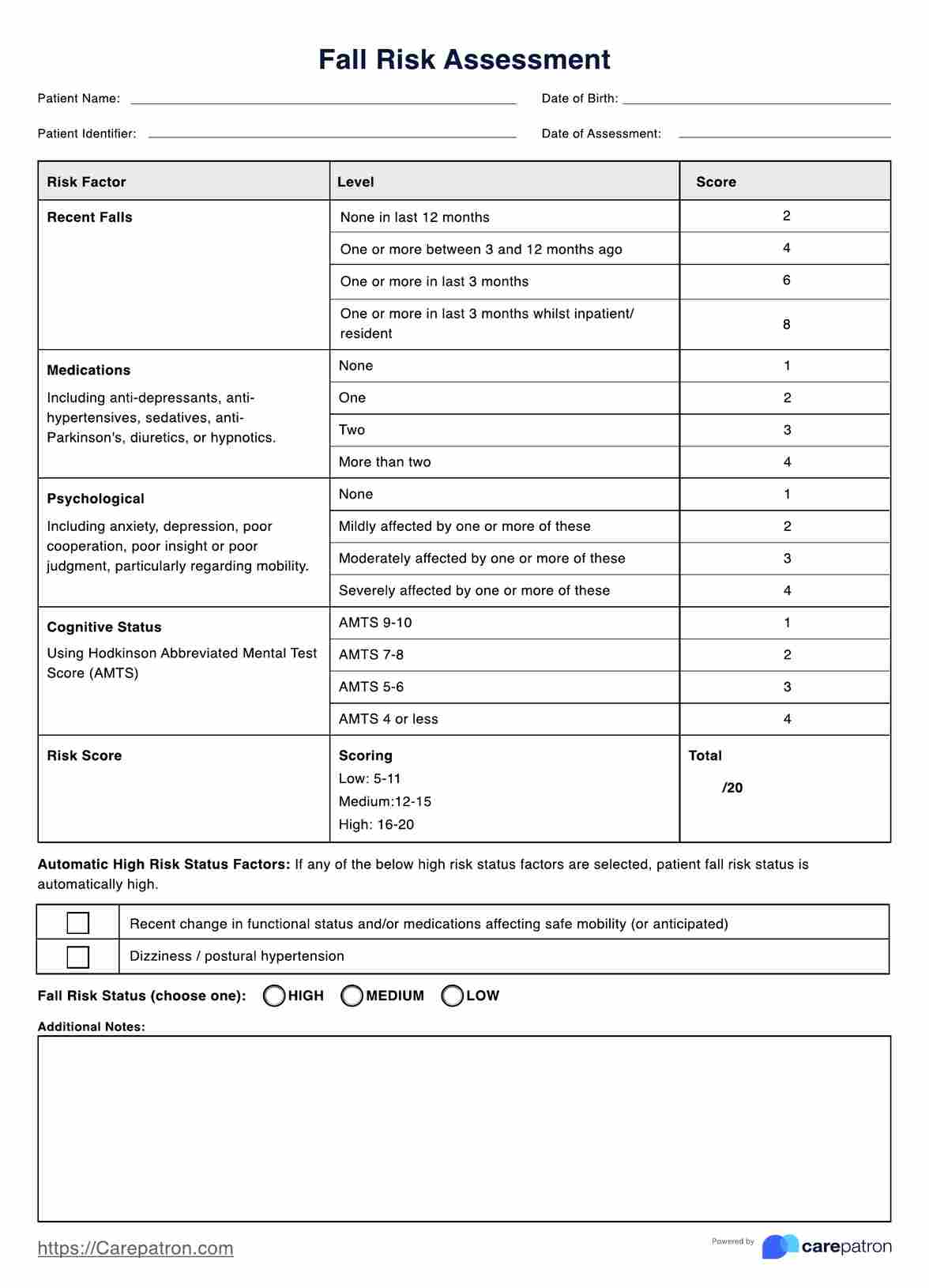Little Known Facts About Dementia Fall Risk.
Table of ContentsThe Facts About Dementia Fall Risk RevealedDementia Fall Risk Things To Know Before You BuySome Ideas on Dementia Fall Risk You Should KnowAll about Dementia Fall RiskDementia Fall Risk Fundamentals Explained
The FRAT has 3 sections: fall threat status, danger variable list, and action strategy. A Fall Danger Standing includes data concerning history of recent falls, medications, emotional and cognitive status of the individual - Dementia Fall Risk.If the client ratings on a threat factor, the corresponding number of factors are counted to the patient's fall danger rating in the box to the much appropriate. If a client's fall risk rating completes five or greater, the individual is at high risk for drops. If the person ratings only 4 factors or lower, they are still at some risk of falling, and the nurse must utilize their ideal professional analysis to take care of all fall danger factors as component of an all natural care plan.
These common techniques, in basic, help create a safe setting that minimizes unintentional drops and delineates core preventative procedures for all clients. Indicators are vital for patients at danger for drops.
Dementia Fall Risk Fundamentals Explained
Wristbands should include the individual's last and very first name, day of birth, and NHS number in the UK. Just red color must be utilized to indicate special client status.
Items that are too far may call for the patient to connect or ambulate unnecessarily and can potentially be a threat or add to drops. Assists avoid the individual from heading out of bed without any type of support. Nurses reply to fallers' call lights quicker than they do to lights started by non-fallers.
Visual disability can greatly cause drops. Keeping the beds closer to the flooring minimizes the threat of falls and serious injury. Putting the bed mattress on the floor significantly lowers autumn danger in some healthcare setups.
Indicators on Dementia Fall Risk You Need To Know
Clients who are high and with weak leg muscles who attempt to remain on the bed from a standing position are likely to drop onto the bed since it's too low for them to reduce themselves safely. Additionally, if a tall person efforts to obtain up from a low bed without aid, the individual is likely to drop back down onto the bed or miss the bed and fall onto the floor.
They're developed to promote prompt rescue, not to protect against falls from bed. Aside from bed alarm systems, increased supervision for high-risk individuals additionally might assist protect against falls.

People with an evasion stride increase autumn chances substantially. To reduce autumn threat, shoes must be with a little to no heel, slim soles with slip-resistant walk, and sustain the ankles. Advise client to utilize nonskid socks to avoid the feet from sliding upon standing. However, urge clients to use proper, well-fitting shoesnot nonskid socks for ambulation.
Getting My Dementia Fall Risk To Work
In a research study, homes with ample lighting report less falls (Ramulu et al., 2021). Improvement in illumination at home might reduce loss rates in older adults.

Sitters are reliable for guaranteeing a safe and secure, safeguarded, and risk-free environment. Nevertheless, research studies demonstrated extremely low-certainty proof that caretakers lower loss danger in severe treatment find out this here medical facilities and only moderate-certainty that choices like video clip monitoring can decrease sitter use without enhancing loss threat, recommending that caretakers are not as useful as originally thought (Greely et al., 2020).
Dementia Fall Risk Can Be Fun For Everyone

Increased physical conditioning minimizes the danger for falls and limits injury that is received when loss transpires. Land and water-based exercise programs might be similarly useful on equilibrium and stride and thus reduce the danger for falls. Water exercise may contribute a positive advantage on balance and stride this link for ladies 65 years and older.
Chair Increase Exercise is a simple sit-to-stand exercise that aids enhance the muscles in the thighs and butts and boosts flexibility and independence. The objective is to do Chair Increase workouts without utilizing hands as the customer becomes more powerful. See sources section for a comprehensive guideline on how to do Chair Surge exercise.